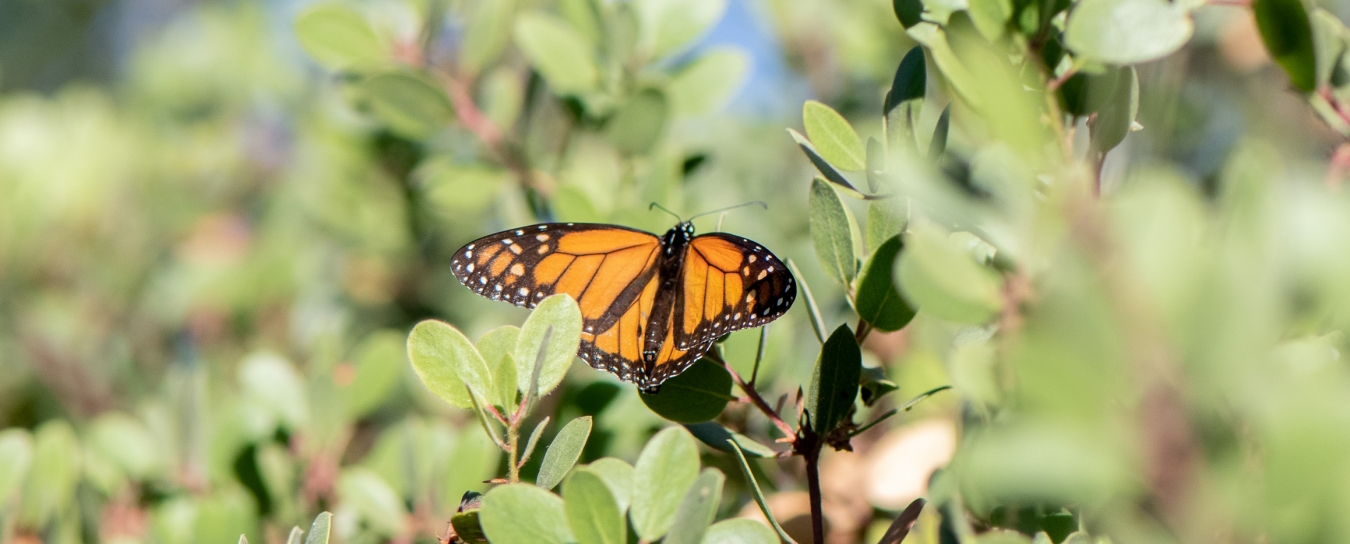
Invertebrates
See our handy guide to critters found in local homes and our Central Coast Butterfly FAQ. Browse the insects and other terrestrial arthropods we’ve identified. Check out local marine invertebrates, particularly bivalve mollusks and intertidal organisms.
- Anthropology
- Rocks & Fossils
- Invertebrates
- Vertebrates
- Botany
- Astronomy
- Fungi
- General
- Recently Asked
Parasite on caterpillar?
Hello,
I recently came upon this cotton-like mass engulfing a green caterpillar. Looking closer the cotton-like mass contained perhaps hundreds of wiggling white larvae. I've been unable to locate anything on the internet that even remotely looks like this. I was hoping you might be able to give me some idea of what this is. I assume it is some sort of parasite. This was observed in vegetation within an arroyo in El Paso, Texas.
I've attached two photos. I have video of the mass on the caterpillar but was unable to send it with this e-mail. I hope they will be of help.
Thanks.
Scott

Curator Response
Hi Scott,
Congratulations on your amazing photos! You caught these creatures during a very small window while something rarely witnessed is happening.
These larvae are endoparasitoids (meaning they feed within another animal and ultimately kill it), almost certainly of wasps of the family Braconidae. The caterpillar appears to be a member of the large family Noctuidae. Braconids are unique in that once the larvae have had their fill, they don't pupate inside the host caterpillar or drop down to the soil, but rather they emerge from their host, stand upright, and pupate in place on the cuticle of their victim! You've caught them in the act of spinning their silken cocoons. If you revisited the scene within a day or two of this event you photographed, you would probably see elongate, white, egg-shaped cocoons stuck to the outside of the caterpillar's dead body. The adult wasps should emerge within a few days after they each cut off a tiny cap from the end of their cocoon.
There's a pretty good time-lapse video showing this process taking place on a hornworm (sphinx moth caterpillar) here, but I'm impressed with just how evenly distributed and "foamy" the silk in your photo looks. I've never seen such an extreme version of this phenomenon—I bet it was quite a sight when all of the larvae were wriggling! I would love to see the video.
There are nearly 2,000 species of Braconidae known from North America, with around 20,000 known for the entire world. This is an amazingly rich group of parasitoids that commonly parasitize caterpillars, though some are even small enough to be endoparasitoids of aphids and bark beetles.
Stay curious,
Schlinger Chair and Curator of Entomology Matthew L. Gimmel, Ph.D.


